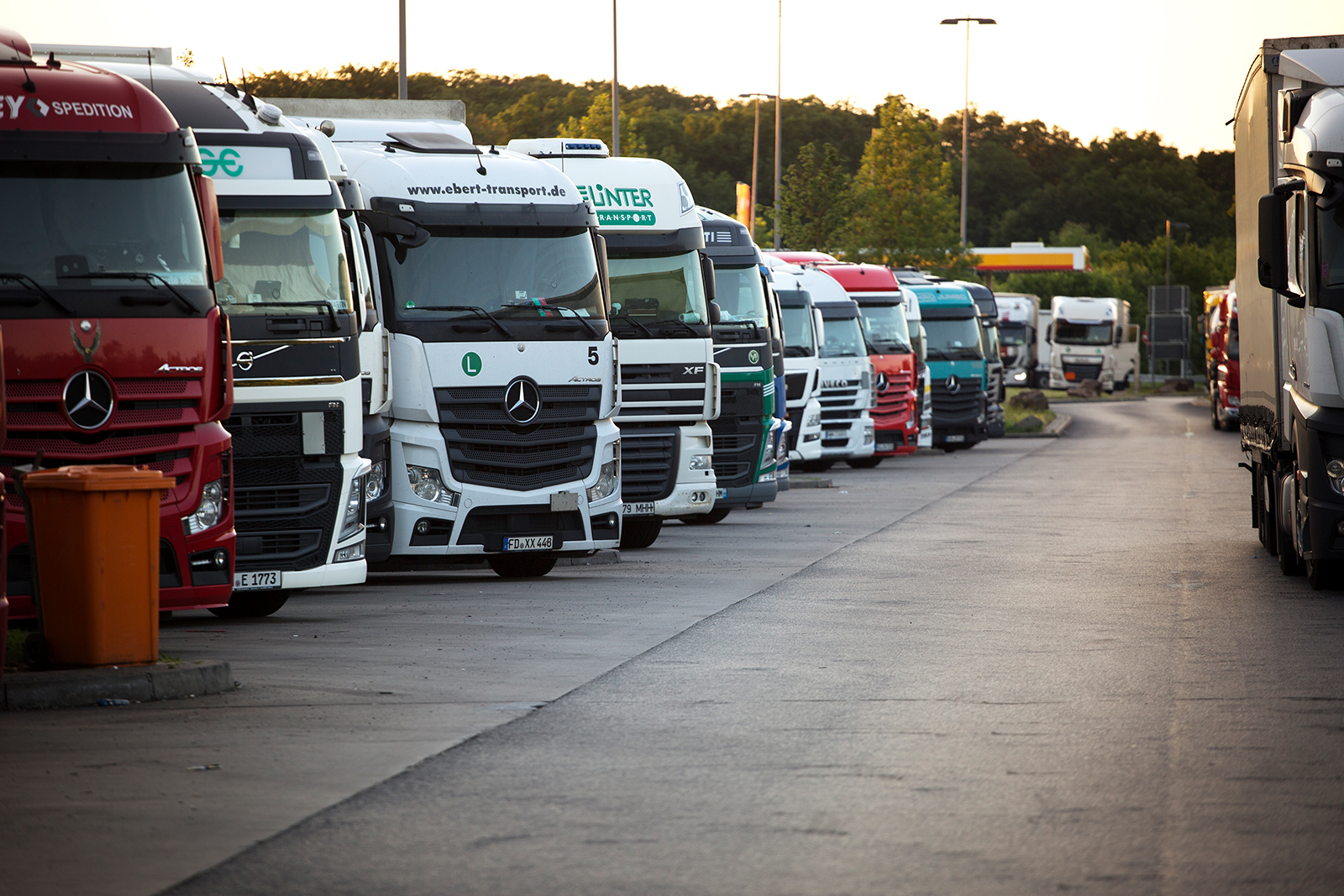Overloaded truck parking lots along Germany’s highways are a huge challenge for transportation companies, as they are required to factor available parking and strict driving time requirements into their route scheduling. Nationwide road haulage, logistics, and disposal association Bundesverband Güterkraftverkehr, Logistik und Entsorgung (BGL) e. V. puts the shortfall of parking spaces on and around highways in Germany at 40,000. And that figure is rising. Finding a regular truck parking space for mandated rest periods is a constant headache for drivers. With parking spaces so hard to find, the search alone can often take so long that drivers run the risk of violating driving time regulations, which can bring hefty fines or even cost them their license. And often, overcrowding at rest stops leads drivers to park illegally and even dangerously. The Smart Optimized Lorry Parking, or SOLP, project aims to address this issue. Researchers from Fraunhofer HHI are working with BLUE Consult GmbH, KRAVAG, and SVG Assekuranz Service GmbH to develop an AI-supported prediction tool for truck drivers and shipping companies to provide information about available public and private parking spaces. The solution is intended to help make it easier for truck drivers to find a place to park and utilize existing space more efficiently, thereby preventing accidents and improving the flow of traffic on the highways. The project is receiving funding from the German Federal Ministry for Digital and Transport (BMDV) as part of the mFUND innovation initiative.
Unlike previous approaches, the SOLP recommendation system does not consider the relevant route as a static sequence of roads and parking lots. Instead, it calculates a dynamic forecast of potentially usable parking spaces based on interdependent factors including traffic density, parking space availability, and driving and rest times. “The innovation consists in displaying a recommendation with regard to truck parking lot occupancy levels along the route so drivers can proceed directly and quickly to those spots with an eye to legal requirements,” says Thomas Meiers, a scientist at Fraunhofer HHI in Berlin. He and his team are responsible for the AI modeling.
Color-coded display shows parking space occupancy
The system supplies color-coded information on available parking. The AI-supported digital recommendation tool is built into either an app or an on-board unit, where it displays parking lot occupancy along a driver’s route using color coding. Red stands for a fully occupied rest stop, yellow for tolerated parking, and green for available rest stop space. Forecasts are updated every 15 minutes for the next two hours. The AI is trained with information on the location and features of induction loops, which count the number of vehicles passing through, and parking spaces within the highway network, with traffic flow data from induction loops and telematics and parking lot occupancy data. To produce a forecast, the current information is then analyzed and linked in real time with the routes traveled by truck drivers.
As the next step, the pilot application is to be tested by selected truck drivers in various states around Germany before the system is rolled out nationwide. The project partners’ objectives include improving the efficiency of parking lot occupancy and reducing the risk of traffic jams. The innovative AI forecast is also intended to prevent accidents due to improper parking in parking lot entrances. The smart parking space search assistant will also significantly ease the burden on truck drivers, giving them a way to comply with legal break time requirements and helping to reduce stress. Logistics companies will be able to plan their deliveries more reliably while conserving fuel and cutting costs.
